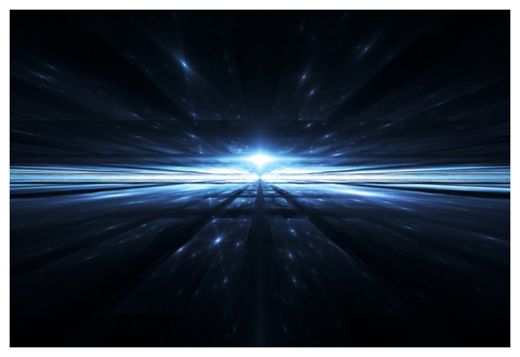
© R.T. Wohlstadter/Shutterstock
When we talk about the vacuum of space, we imagine a complete lack of matter - a cold void, dark, and absent of all energy. Over the last century, however, physicists have come to realize that the emptiness of space is anything by empty.
On the macro scale, the vacuum of empty space may appear to lack matter and energy as we normally think of it. But when we look closely, and begin to examine the quantum interactions that take place in the very fabric of
space-time that binds our Universe together, we find a busy network of particles and light popping in and out of existence.
These so-called virtual particles are just like any other particles of their type, but they are almost immediately re-absorbed by the vacuum, making their detection difficult. Understanding these particles, their energies and how they interact with the vacuum of space-time is crucial to fully understanding the physical laws of nature.
And now, two independent research teams have found that the properties of the vacuum, and how these virtual particles behave, may reveal some exciting implications about relativity and particle physics theory.
A group led by Marcel Urban from the University of Paris-Sud, located in Orsay, France has
modeled the vacuum as being filled with pairs of virtual particles possessing fluctuating energy levels. This model would explain the permeability and permittivity of the vacuum - the properties that dictate how electric and magnetic fields interact in space. But it also had an interesting consequence: as the properties of the vacuum varied over time, so would the speed of light. While the variations would be small, they could be measured using recent advances in ultra-fast laser technology.
The team of Gerd Leuchs and Luis L. Sánchez-Soto, from the Max Planck Institute for the Physics of Light in Erlangen, Germany, took a different approach to examining the vacuum. In their study, the pair instead modeled the
polarization of the vacuum using virtual electric dipole pairs.
But while Urban's team examined the consequences of their model on the speed of light, Leuchs and Sánchez-Soto instead built their model on a fixed cosmic speed limit.
In their simulation, they found that the vacuum impedance - which is strongly correlated with the speed of light - is dependent only on the charges of the virtual dipoles, but not their masses. If true, their model would cap the number of possible number of elementary charged particles in nature; a consequence long suspected by experimental physicists.
In both cases, these theories provide testable hypotheses. So while it is too early to start re-writing Einstein's theory of relativity, there are some exciting possibilities on the horizon.

Reader Comments
to our Newsletter